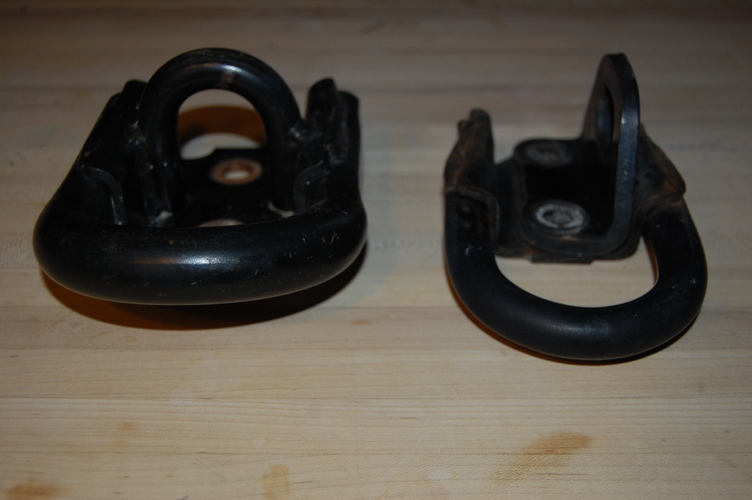Hello David. Thanks for your constructive criticism, I do appreciate it. You are going to become a very welcome addition around here.
You bring up a good point, and here are my thoughts on this...
The material under the bolts is the same thickness on both units. The L is not welded into the unit, but is held on by the bolts. It does help with shear load and pull over at the bolted joint of the recovery hoop, though I am less concerned about this area for a catastrophic failure... I would rather see this area of structure start to bend and show the signs of fatigue. Why? We want it to degrade first, before the frame underneath, which we can't replace, or so easily inspect. A good solution here, if we find it to be a problem, is an additional bracket secured here with the same two bolts. Then run back and bolted to the frame in an additional spot, this would place us in double shear and considerably reduce the stresses at these points.
One of the main concerns here is the tensile of the actual loop, and this is where the upgrade lies.. It sees lots of abuse from two sources... connecting hooks, chains, or what one has, to it for recovery, along with rubbing and grinding on the ground. These wear on the bar and create significant stress raisers at the most critical and uncontrolled connection point used during recovery. Working diameter may be slowly decreased as it wears. Toyota has given this point lots of extra room on the Tundra unit. Additionally, the larger bar gives our nylon recovery straps a larger radius to wrap (keep them isolated from those scratches and wear marks!), which keeps them further away from their minimum bend radius, and thus performing properly.
We can discuss this further if you, or anyone else wants. As there are other areas, the legs, the width, etc that all factor into what we are using them for. I'm always game... and again, welcome!






